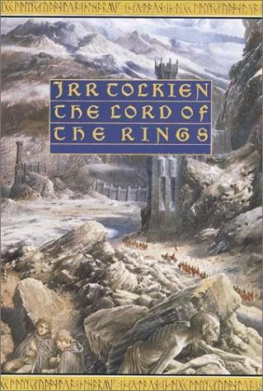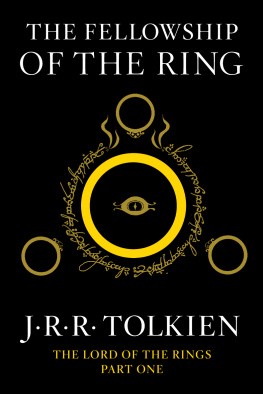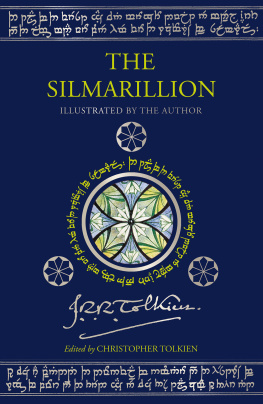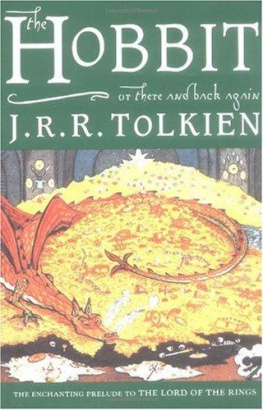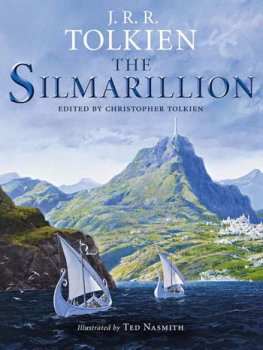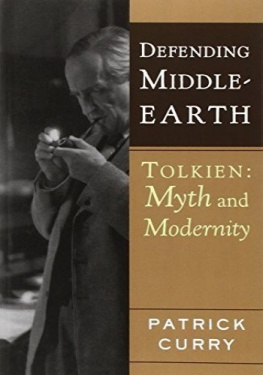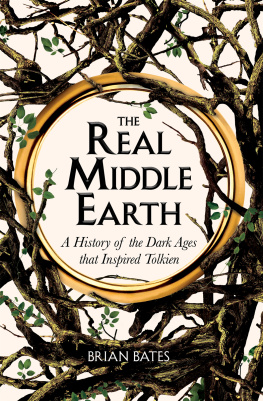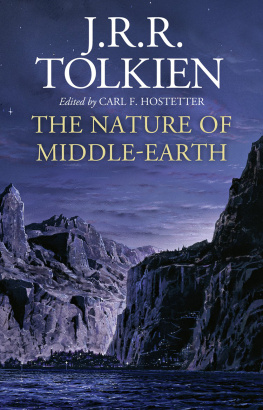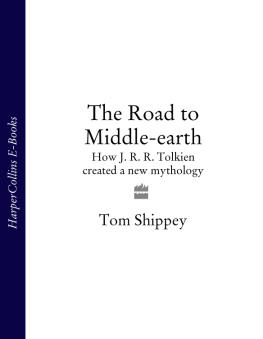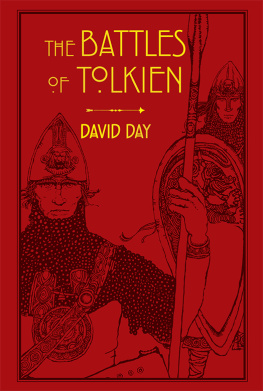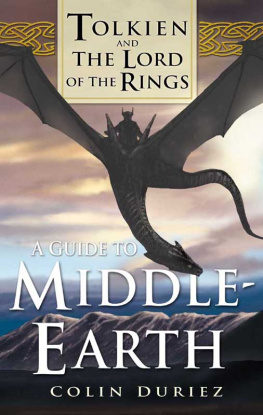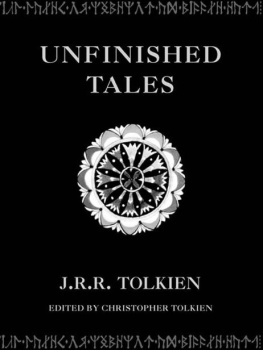J.R.R. Tolkien - Unfinished Tales: The Lost Lore of Middle-earth
Here you can read online J.R.R. Tolkien - Unfinished Tales: The Lost Lore of Middle-earth full text of the book (entire story) in english for free. Download pdf and epub, get meaning, cover and reviews about this ebook. year: 1988, publisher: Del Rey, genre: Romance novel. Description of the work, (preface) as well as reviews are available. Best literature library LitArk.com created for fans of good reading and offers a wide selection of genres:
Romance novel
Science fiction
Adventure
Detective
Science
History
Home and family
Prose
Art
Politics
Computer
Non-fiction
Religion
Business
Children
Humor
Choose a favorite category and find really read worthwhile books. Enjoy immersion in the world of imagination, feel the emotions of the characters or learn something new for yourself, make an fascinating discovery.
- Book:Unfinished Tales: The Lost Lore of Middle-earth
- Author:
- Publisher:Del Rey
- Genre:
- Year:1988
- Rating:3 / 5
- Favourites:Add to favourites
- Your mark:
- 60
- 1
- 2
- 3
- 4
- 5
Unfinished Tales: The Lost Lore of Middle-earth: summary, description and annotation
We offer to read an annotation, description, summary or preface (depends on what the author of the book "Unfinished Tales: The Lost Lore of Middle-earth" wrote himself). If you haven't found the necessary information about the book — write in the comments, we will try to find it.
Unfinished Tales: The Lost Lore of Middle-earth — read online for free the complete book (whole text) full work
Below is the text of the book, divided by pages. System saving the place of the last page read, allows you to conveniently read the book "Unfinished Tales: The Lost Lore of Middle-earth" online for free, without having to search again every time where you left off. Put a bookmark, and you can go to the page where you finished reading at any time.
Font size:
Interval:
Bookmark:
NOTE
It has been necessary to distinguish author and editor in different ways in different parts of this book, since the incidence of commentary is very various. The author appears in larger type in the primary texts throughout; if the editor intrudes into one of these texts he is in smaller type intended from the margin (e.g. p. 307) In The History of Galadriel and Celeborn, however, where editorial text is predominant, the reverse indentation is employed. In the Appendixes (and also in The Further Course of the Narrative of 'Aldarion and Erendis', pp. 215 ff.) both author and editor are in the smaller type, with citations from the author indented (e.g. p. 161).
Notes to texts in the Appendixes are given as footnotes rather than as numbered references; and the author's own annotation of a text at a particular point is indicated throughout by the words '[Author's Note]'.
The problems that confront one given responsibility for the writings of a dead author are hard to resolve. Some persons in this position may elect to make to material whatsoever available for publication, save perhaps for work that was in a virtually finished state at the time of the author's death. In the case of the unpublished writings of J. R. R. Tolkien this might seem at first sight the proper course; since he himself, peculiarly critical and exacting of his own work, would not have dreamt of allowing even the more completed narratives in this book to appear without much further refinement.
On the other hand, the nature and scope of his invention seems to me to place even his abandoned stories in a peculiar position. That The Silmarillion should remain unknown was for me out of the question, despite its disordered state, and despite my father's known if very largely unfulfilled intentions for its transformation; and in that case I presumed, after long hesitation, to present the work not in the form of an historical study, a complex of divergent texts interlinked by commentary, but as a completed and cohesive entity. The narratives in this book are indeed on an altogether different footing: taken together they constitute no whole, and the book is no more than a collection of writings, disparate in form, intent, finish, and date of composition (and in my own treatment of them), concerned with Nmenor and Middle-earth. But the argument for their publication is not different in its nature, though it is of lesser force, from that which I held to justify the publication of The Silmarillion. Those who would not have forgone the images of Melkor with Ungoliant looking down from the summit of Hyarmentir upon "the fields and pastures of Yavanna, gold beneath the tall wheat of the gods"; of the shadows of Fingolfin's host cast by the first moonrise in the West; of Beren lurking in wolf's shape beneath the throne of Morgoth; or of the light of the Silmaril suddenly revealed in the darkness of the Forest of Neldoreth - they will find, I believe, that imperfections of form in these tales are much outweighed by the voice (heard now for the last time) of Gandalf, teasing the lordly Saruman at the meeting of the White Council in the year 2851, or describing in Minas Tirith after the end of the War of the Ring how it was that he came to send the Dwarves to the celebrated party at Bag-End; by the arising of Ulmo Lord of Waters out of the sea at Vinyamar; by Mablung of Doriath hiding "like a vole" beneath the ruins of the bridge at Nargothrond; or by the death of Isildur as he floundered up out of the mud of Anduin.
Many of the pieces in this collection are elaborations of matters told more briefly, or at least referred to, elsewhere; and it must be said at once that much in the book will be found unrewarding by readers of The Lord of the Rings who, holding that the historical structure of Middle-earth is a means and not an end, the mode of the narrative and not its purpose, feel small desire of further exploration for its own sake, do not wish to know how the Riders of the Mark of Rohan were organised, and would leave the Wild Men of the Dradan Forest firmly where they found them. My father would certainly not have thought them wrong. He said in a letter written in March 1955, before the publication of the third volume of The Lord of the Rings:
I now wish that no appendices had been promised! For I think their appearance in truncated and compressed form will satisfy nobody; certainly not me; clearly from the (appalling mass of) letters I receive not those people who like that kind of thing - astonishingly many; while those who enjoy the book as an "heroic romance" only, and find "unexplained vistas" part of the literary effect, will neglect the appendices, very properly.
I am not now at all sure that the tendency to treat the whole thing as a kind of vast game is really good - certainly not for me who find that kind of thing only too fatally attractive. It is, I suppose, a tribute to the curious effect that a story has, when based on very elaborate and detailed workings, of geography, chronology, and language, that so many should clamour for sheer "information," or "lore."
In a letter of the following year he wrote:
... while many like you demand maps, others wish for geological indications rather than places; many want Elvish grammars, phonologies, and specimens; some want metrics and prosodies.... Musicians want tunes, and musical notation; archaeologists want ceramics and metallurgy; botanists want a more accurate description of the mallorn, of elanor, niphredil, alfirin, mallos, and symbelmyn, historians want more details about the social and political structure of Gondor; general enquirers want information about the Wainriders, the Harad, Dwarvish origins, the Dead Men, the Beornings, and the missing two wizards (out of five).
But whatever view may be taken of this question, for some, as for myself, there is a value greater than the mere uncovering of curious detail in learning that Vantur the Nmenrean brought his ship Entuless, the "Return", into the Grey Havens on the spring winds of the six hundredth year of the Second Age, that the tomb of Elendil the Tall was set by Isildur his son on the summit of the beacon-hill Halifirien, that the Black Rider whom the Hobbits saw in the foggy darkness on the far side of Bucklebury Ferry was Khaml, chief of the Ringwraiths of Dol Guldur - or even that the childlessness of Tarannon twelfth King of Gondor (a fact recorded in an Appendix to The Lord of the Rings) was associated with the hitherto wholly mysterious cats of Queen Berthiel.
The construction of the book has been difficult, and in the result is somewhat complex. The narratives are all "unfinished," but to a greater or lesser degree, and in different senses of the word, and have required different treatment; I shall say something below about each one in turn, and here only call attention to some general features.
The most important is the question of "consistency," best illustrated from the section entitled "The History of Galadriel and Celeborn." This is an "Unfinished Tale" in a larger sense: not a narrative that comes to an abrupt halt, as in "Of Tuor and his Coming to Gondolin," nor a series of fragments, as in "Cirion and Eorl," but a primary strand in the history of Middle-earth that never received a settled definition, let alone a final written form. The inclusion of the unpublished narratives and sketches of narrative on this subject therefore entails at once the acceptance of the history not as a fixed, independently-existing reality which the author "reports" (in his "persona" as translator and redactor), but as a growing and shifting conception in his mind. When the author has ceased to publish his works himself, after subjecting them to his own detailed criticism and comparison, the further knowledge of Middle-earth to be found in his unpublished writings will often conflict with what is already "known"; and new elements set into the existing edifice will in such cases tend to contribute less to the history of the invented world itself than to the history of its invention. In this book I have accepted from the outset that this must be so; and except in minor details such as shifts in nomenclature (where retention of the manuscript form would lead to disproportionate confusion or disproportionate space in elucidation) I have made no alterations for the sake of consistency with published works, but rather drawn attention throughout to conflicts and variations. In this respect therefore "Unfinished Tales" is essentially different from The Silmarillion, where a primary though not exclusive objective in the editing was to achieve cohesion both internal and external; and except in a few specified cases I have indeed treated the published form of The Silmarillion as a fixed point of reference of the same order as the writings published by my father himself, without taking into account the innumerable "unauthorised" decisions between variants and rival versions that went into its making.
Next pageFont size:
Interval:
Bookmark:
Similar books «Unfinished Tales: The Lost Lore of Middle-earth»
Look at similar books to Unfinished Tales: The Lost Lore of Middle-earth. We have selected literature similar in name and meaning in the hope of providing readers with more options to find new, interesting, not yet read works.
Discussion, reviews of the book Unfinished Tales: The Lost Lore of Middle-earth and just readers' own opinions. Leave your comments, write what you think about the work, its meaning or the main characters. Specify what exactly you liked and what you didn't like, and why you think so.


